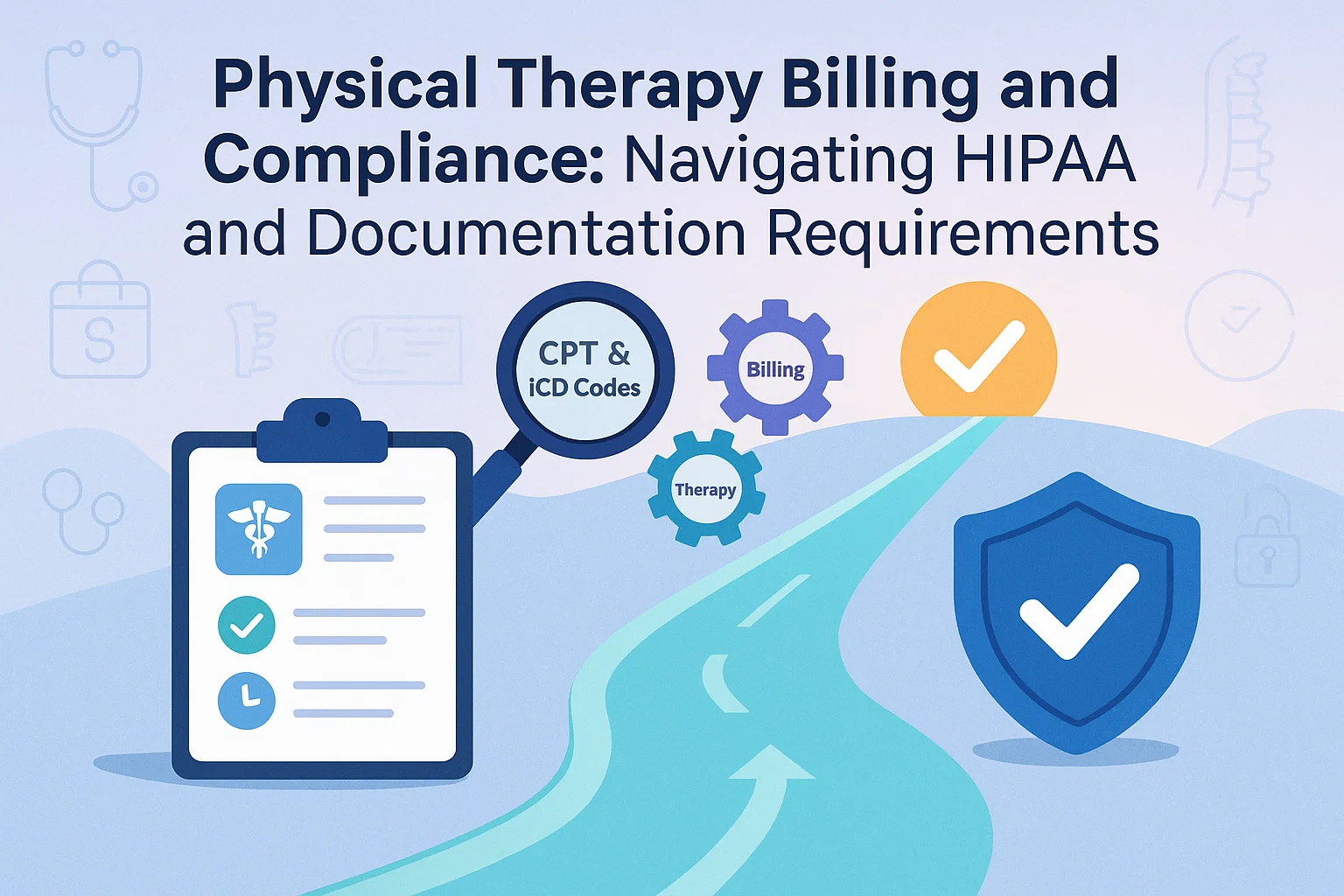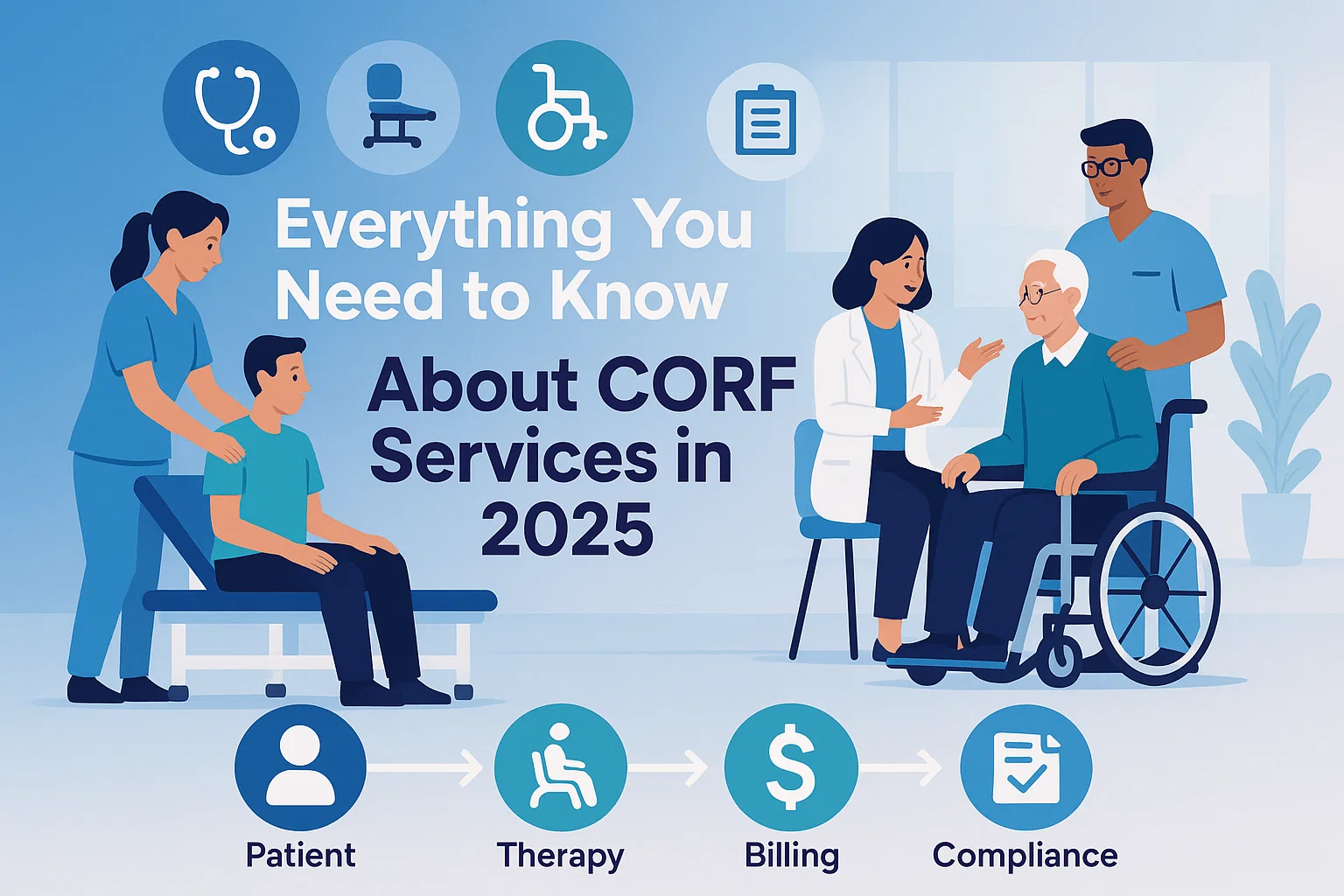Every minute counts in occupational therapy — not just for your patients’ progress but also for your clinic’s financial health. That’s where OT billing units come into play. Getting them right can mean the difference between being paid in full and losing thousands in unbilled time. Yet, many therapists struggle with this seemingly simple concept.
So, in this blog, we’ll walk you through everything you need to know about Billing Units Occupational Therapy — from understanding the basics to mastering the 8-minute rule, avoiding common mistakes, and even looking into the Future of OT Billing Units. Think of this as A Comprehensive Guide to Occupational Therapy Billing, explained in a friendly, easy-to-follow way.
1. Introduction: Why OT Billing Units Matter More Than Ever
Let’s start with a truth: even the best therapy skills won’t help if your billing isn’t accurate. Incorrect billing unit calculation is one of the biggest revenue leaks in therapy clinics today. Each missed unit is like leaving money on the table.
OT billing units are the foundation of how you get paid. They determine how much you’re reimbursed for every service you provide. When miscalculated, insurance companies may underpay or even reject your claims. The goal of this blog is simple — to help you understand, calculate, and optimize your OT billing units so you can boost your clinic’s revenue with confidence.
2. Understanding the Basics: What Are OT Billing Units?
So, what exactly are OT billing units? Simply put, they represent chunks of time that therapists spend providing billable care to patients. Most time-based codes are measured in 15-minute increments, known as “units.”
Think of it this way — if you spend 45 minutes doing therapeutic activities, you can bill for 3 units based on CPT (Current Procedural Terminology) guidelines.
These units help determine how much you’re reimbursed by insurers or Medicare. The more precisely you calculate your time, the more accurately you’ll be paid. This is where having professional occupational therapy billing services can make a real difference, as they ensure every minute is accounted for correctly.
3. The Role of CPT Codes in OT Billing
CPT codes — short for Current Procedural Terminology — are standardized codes that describe every medical, physical, and occupational therapy service. Each code tells the insurance company what kind of treatment was provided.
Types of CPT Codes
- Timed Codes: These are billed in 15-minute increments. Examples include therapeutic exercises and self-care training.
- Service-Based Codes: These are billed once per session, regardless of time spent (e.g., evaluations).
Common OT CPT Codes
- 97165–97167: OT Evaluations
- 97530: Therapeutic activities
- 97535: Self-care/home management training
- 97110: Therapeutic exercises
Using the correct CPT code ensures your Billing Units Occupational Therapy are calculated properly — which means faster, more accurate reimbursements.
4. Time-Based vs. Service-Based OT Billing Units
Here’s where many therapists get confused. Let’s make it simple:
Time-Based Units
These are billed according to how long you spend performing a specific treatment. The standard formula follows the 8-minute rule (which we’ll discuss in the next section).
| Minutes of Service | Billable Units |
|---|---|
| 8–22 minutes | 1 unit |
| 23–37 minutes | 2 units |
| 38–52 minutes | 3 units |
| 53–67 minutes | 4 units |
Service-Based Units
These services are billed once per session, regardless of duration. For example, OT evaluations (CPT 97165) are always billed as one unit — even if they take 60 minutes.
Many clinics lose revenue by mixing up these categories. Using professional occupational therapy billing services can help you avoid these common mix-ups and ensure accuracy.
5. The 8-Minute Rule: The Heart of OT Billing Accuracy
The 8-minute rule is the backbone of time-based OT billing. It defines how many units you can bill based on total treatment time.
Here’s how it works:
- 8–22 minutes = 1 unit
- 23–37 minutes = 2 units
- 38–52 minutes = 3 units
- 53–67 minutes = 4 units
For instance, if you spent 35 minutes doing therapeutic exercise, you can bill for 2 units. But if you worked for 36 minutes, you can’t round up — you must still bill 2 units. This level of accuracy ensures you’re compliant and reimbursed fairly.
6. Common Mistakes in OT Billing Unit Calculation
Even small mistakes can have a big impact. Here are a few common ones:
- Mixing up time-based and service-based codes.
- Double billing for overlapping minutes.
- Skipping proper documentation.
- Rounding errors with the 8-minute rule.
These errors often lead to claim denials or reduced reimbursement. The solution? Double-check your logs, use clear templates, and consider outsourcing to Physical Therapy Billing Services or expert occupational therapy billing services who handle such details daily.
7. Documentation Best Practices for OT Billing
Accurate documentation is your best defense against audits and payment denials. It also helps justify every billed unit.
Every note should include:
- Start and end times of each activity.
- Type of intervention provided.
- Patient’s progress or response.
- Therapist’s signature and date.
Incomplete documentation can lead to losing billable time — and ultimately, revenue. Electronic Medical Record (EMR) systems designed for therapy make this process much smoother.
8. How to Maximize Revenue with Correct OT Billing Units
Now for the fun part — boosting your clinic’s profitability. Here’s how:
- Audit your billing regularly. Catch errors before claims go out.
- Train your staff. Teach them CPT updates and time-tracking accuracy.
- Leverage billing software. Many tools now automate time-based unit calculation.
- Stay current with CMS guidelines. Medicare updates often impact billing rules.
- Use modifiers correctly. They clarify multiple services in one session.
One clinic reported a 15% revenue increase after fixing consistent 8-minute rule errors. It’s living proof that small adjustments in Billing Units Occupational Therapy can make a huge difference.
9. Partnering with Professional Billing Services
Managing billing in-house can be exhausting. That’s why more clinics are outsourcing to specialized occupational therapy billing services or Physical Therapy Billing Services. These professionals understand OT billing units inside out.
Benefits of Outsourcing:
- Reduced claim denials.
- Faster reimbursements.
- Full compliance with Medicare and private insurance rules.
- More time for therapists to focus on patients.
In short, working with experts means fewer headaches and more consistent cash flow.
10. The Future of OT Billing: Automation and AI
Welcome to the Future of OT Billing Units — a world where automation and AI simplify everything. Modern billing platforms use AI to track therapy time, auto-assign CPT codes, and even flag potential errors in real time.
This smart technology reduces human error, ensures compliance, and boosts efficiency. For busy therapy clinics, it’s a game-changer that’s already shaping the Future of OT Billing Units.
11. Conclusion: Accuracy = Profitability
If you take away one thing, let it be this — accuracy drives profitability. When you understand your CPT codes, apply the 8-minute rule properly, document every detail, and seek expert help when needed, your revenue grows consistently.
This isn’t just about numbers — it’s about running a sustainable, thriving therapy practice. Hopefully, this has served as A Comprehensive Guide to Occupational Therapy Billing that helps you work smarter, not harder.
12. FAQs About OT Billing Units
1. What is one OT billing unit equal to?
Typically, one unit equals 15 minutes of direct, billable therapy time.
2. How do I calculate billing units for a 45-minute session?
Using the 8-minute rule, 45 minutes equals 3 units.
3. What’s the difference between PT and OT billing units?
They follow similar rules, but the specific CPT codes differ between physical and occupational therapy.
4. How often are CPT codes updated?
Usually once a year — always check with CMS or your billing provider for updates.
5. Can I bill for multiple therapies in one session?
Yes, as long as each service is distinct, documented, and supported by appropriate CPT codes.











